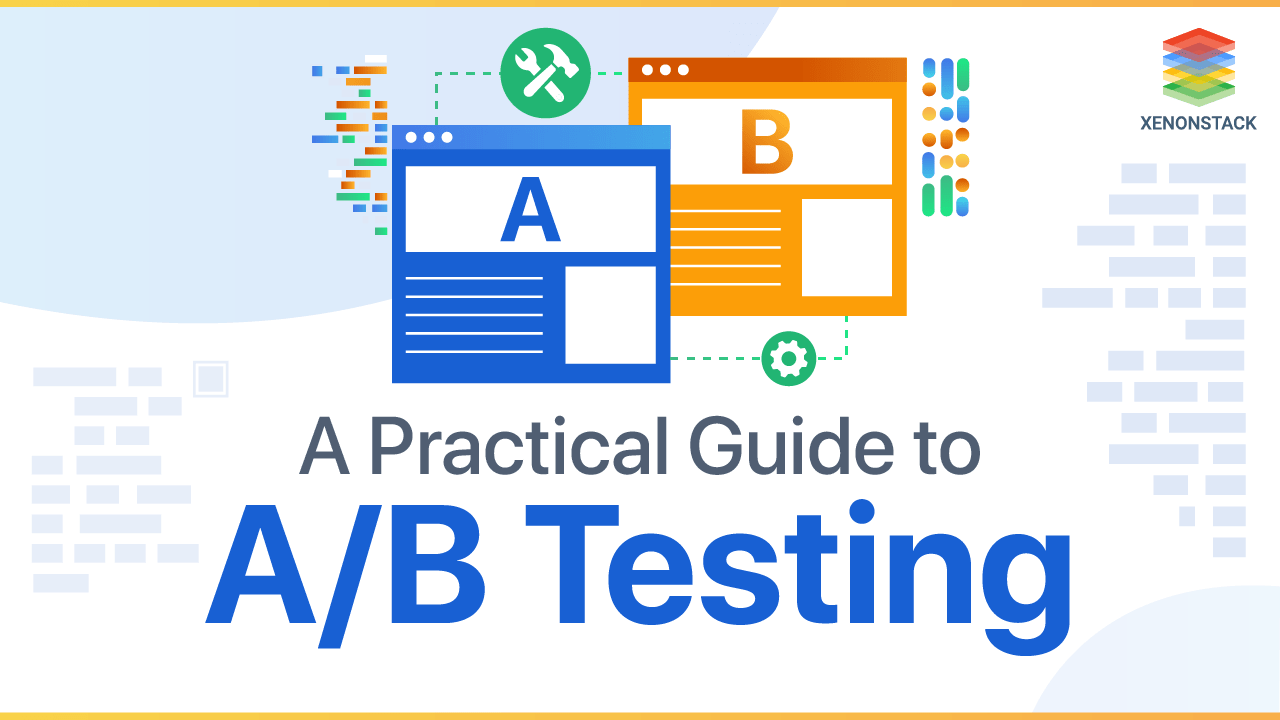
What is A/B Testing?
A/B testing is mainly a comparison of two versions of web pages to check which version is performing better. For example, compare two web pages by showing the two variants (let's call them A and B ) to similar visitors simultaneously. The version that gives a better conversion rate will be preferred. This type of testing is mainly an experiment where two or more page variants are shown to users at random, and Statistical Analysis is used to determine which page variation performs better for a conversion goal.
Types of user acceptance testing in which the development team delivers the completed product to the users to evaluate its actual performance. Click to explore about our, Beta Testing Strategy
It takes the guesswork out of website optimization and helps to make data-informed decisions that make business conversions from " think" to "know." It helps to know where to work to grow websites or applications. Learn more about Performance Monitoring Tools in this insight. All websites available on the web have a goal - a reason for them to exist. The reason is explained as follows -
- E-Commerce websites want visitors to buy their products.
- SaaS Web applications want visitors to make Sign-up for a trial and then convert to paid visitors.
- News and media websites always want their readers to click on Ads or Sign up for paid subscriptions.
What to test while A/B testing?
The components of the A/B test are explained as follows -- Subheadline
- Paragraph Text
- Testimonials
- Call to Action text
- Call to Action Button
- Links
- Images
- Content near the fold
- Social proof
- Media Mentions
- Awards and badges
No single point of failure. When one service is down users can still use the application. Other services are still working. Source: Contract Testing for Applications
Benefits of A/B testing
Testing allows individuals, teams, and companies to make changes to user experiences by creating a new version for the same page while collecting data on the results of A/B testing. While making changes, it helps to learn why certain elements are impacted while collecting data for user behavior. It is not only a one-off question or settling a disagreement; it is more than that. It is a testing type used to continually improve a given experience (which can be determined by collected stats). It also helps to improve a single goal, like improving a conversion rate over time.For Example
B2B technology company wants to improve sales, lead quality, and also volume from their campaign landing pages. To achieve the above-stated goal, a team of companies would try to do A/B testing changes for elements mentioned under "what to test while A/B test section." This type of testing acts as a pinpoint for changes that had an effect on visitor behavior and which changes did not affect behavior. With time, the effect of multiple changes from experiments is combined into one that helps to demonstrate the measurable improvement of a new experience over an old experience of a website or web application. For example, while making a comparison of two different versions of Ads. What can be checked under this? In this, check what version of Ads gathers more clicks.What is the A/B testing methodology?
While working on an A/B test, a web page or application screen is chosen and modified to create a second version of the same web page or screen. It is made on the second-page version as simple as a single headline or button or can be a complete redesign of the page. Then after the above step, half of the traffic is rendered to an original version of a page, and half of the traffic is rendered to a modified version. Then visitors of the same web page can be rendered to a control or a Variation. The engagement of users is measured for each either for control or for variation. Is it possible to determine that after making changes, what type of effect it is producing? It is producing a positive effect, adverse effect, or not making any impact on visitor behavior.Agile is a methodology that allows continuous iteration of development and testing all through the software development life cycle. Source: Role of Automated Testing
Why do we use A/B testing?
It helps product developers, as well as designers, to check the impact of new features or changes on the user experience. The product onboarding, user engagement, modal, and in-product experience are optimized by using A/B testing; this process continues till goals are not fulfilled.A/B Testing process
The following A/B testing framework runs A/B tests -
- Collect Data - Data collected while analytics will provide insight into where optimization starts. It begins with a high-traffic area of a site or application to gather data faster. Using this process, pages with low conversion rates and high-drop off-rates were obtained and improved.
- Identify Goals - Conversion goals are the main metrics used to determine whether or not a variation is more successful than an original version. Goals can be small or can be considerable. Goals can be anything from clicking a link or button to buying a product.
- Generate Hypothesis - Once getting clarity on why this version should be better than the previous. Once having a list of ideas or goals, that why attempt to get new ideas? After making a list of ideas, prioritize them regarding the expected impact and difficulty of implementation.
- Create Variations - Make a new variation of the page, including working on changing the color of a button, swapping the order for elements present on the page, hiding navigation items current on a page, or customization. Many leading A/B testing tools like Visual Editor make changes easy. But it requires experience from a QA that new variations created using tools are correct.
- Run Experiment - Make a new variation of the page along with this; wait for visitors to participate or wait for visitors to render a web page. In this process, visitors on a site or application are randomly rendered to either control or change the web page. The user's interaction with each experience is measured, countered, and compared to determine how each version executes.
- Analyze Results - Once the experience renders users randomly either to control or variation, analyze the results. A/B testing of the web application or website presents data from two different experiments. Apart from making a comparison, it also shows the difference between the two versions of pages( static difference or not).
How do you conduct an A/B test?
A four-step process for the A/B test by Visual Editor is explained as follows -
- Add a Visual Website Optimizer code snippet in the code of the website - Adding or including a code snippet allows test cases to run on a website. To make things easier, WordPress, Drupal, and Joomla plugins are open to creating the whole process of A/B tests hassle-free.
- Creation of variations using a WYSIWYG Visual Editor - Load a website in a Visual Editor and create changes using a simple point-and-click interface (including clicking on the link and a button). More advanced users make changes to CSS and JS Code.
- Select goals - All the A/B tests for a web page of the website have goals. Here goal means to render a web page whose conversion rate is required to increase(goals can be links, buttons, etc.). All goals are defined as straightforward(such as clicks on links and the number of users who visited a page) or some code-level changes made to execute A/B tests for web pages.
- Get started and track A/B tests - When defined, the A/B test is ready to go live. Then after that, Real-Time reports are achieved. Data are obtained on reports as soon as visitors start arriving on a Real-Time test.

What are the best practices of A/B Testing?
Google permits that the A/B test does not possess not any risk to the website and not affects the search rank of the website. Following Best Practices considered while execution of A/B Test cases -No Cloaking
To show search engines different content than a typical user would see. It results in the removal of content from search results. To prevent cloaking, do not adapt visitor segmentation to display different-different content for different users.Use rel="canonical."
While the execution of a split test with multiple URLs, the rel="canonical" attribute used for variations goes back to the original version of a page. Preferring this prevents Googlebot from getting confused by multiple versions of the same page.Use 302 Redirects Instead Of 301s
While the execution of a test redirects the original URL to a variation URL, such as using a 302 (temporary) redirect via a 301(permanent) redirect. This tells a search engine such as Google that the redirection is going temporarily and the Original URL is indexed than a testing URL.Run experiments as long as they are necessary
To run tests for a longer time than an essential, especially in a case while serving a one-page variation to a more significant percentage of users, this condition is seen as an attempt to deceive (fraud)search engines. Google recommends updating the site and removing all test variations from the site as soon as the testing purpose is fulfilled to avoid unnecessary test runs from a site. For more information about implementing A/B tests, for example, a technology company must increase the number of high-quality leads for their sales team, enhance the number of free trial users, and attract specific buyers. Then a different variation of the same page required testing for various components, and these components are defined as follows -- Lead from components.
- Free trial Sign up the flow.
- Homepage messaging and a call to action (such as clicking on buttons and links) generate a different event).
What are the best A/B Testing Tools?
A different number of tools are used to do tests on a web page of the website. But measurably of tests improved using Google analytics. The following are the best AB testing tools.- Visual Editor Analytics
- Google Analytics

Concluding
In conclusion, A/B testing is the best way to learn about audiences' preferences and to make changes to a website so that it helps to fulfill all the essential goals or helps to meet requirements expected from a website. Such as, a technology company's website wants to get more and more bids from clients. For such a site, there is a client, and there is a goal to get a lot and a lot of bids from a client.
- Explore about ML Model Testing Training and Tools
- Click to know about Software Testing Best Practices
.webp?width=1921&height=622&name=usecase-banner%20(1).webp)


